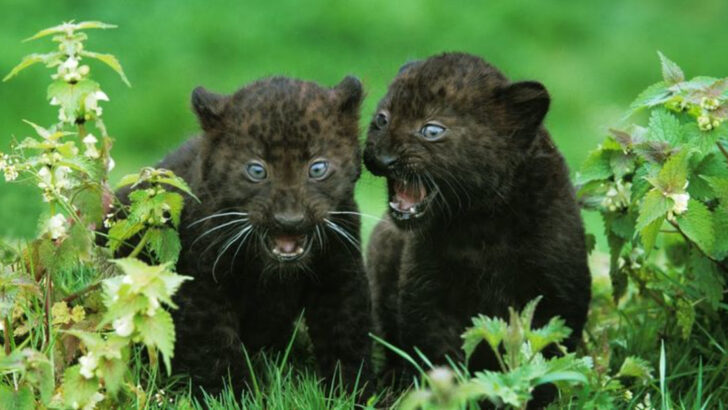Black isn’t just bold—it’s built for survival. In the wild, a dark coat can mean the difference between dinner and being dinner. From silent stalkers in the night to shadowy swimmers in deep waters, these black-coated animals have turned their coloring into a powerful advantage. Some vanish into the dark before danger spots them. Others use their color to intimidate, absorb heat, or blend into volcanic landscapes. These creatures aren’t just mysterious—they’re masters of adaptation. Get ready to meet 11 animals cloaked in black that prove survival isn’t always about speed or strength—sometimes, it’s all about shade.
Black Panther
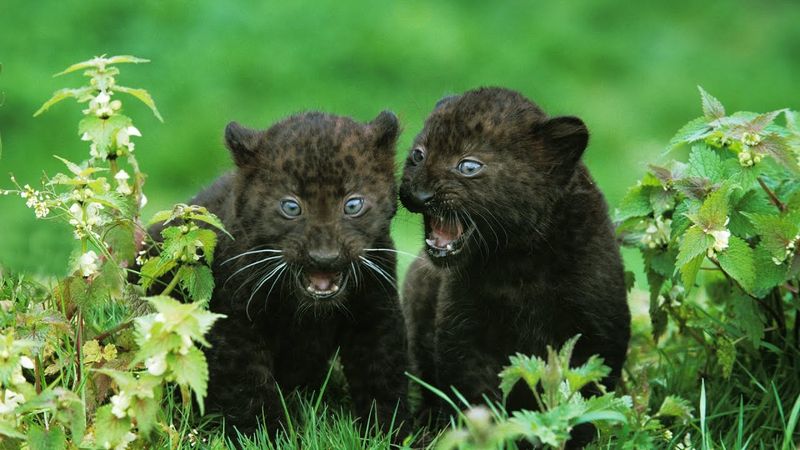
With an aura of mystery and power, the black panther navigates the jungle with ease. Its coat, a rich ebony hue, provides exceptional camouflage. This allows it to stalk prey unnoticed, a crucial advantage in the dense forest.
The black panther’s coat is not just for hunting. It also absorbs heat, keeping the animal warm during the cooler nights. This adaptation is vital for survival in the varied climates of its habitat.
Did you know? The term “black panther” is used for both leopards and jaguars with the melanistic gene. This genetic trait gives them their distinctive color.
Black Bear
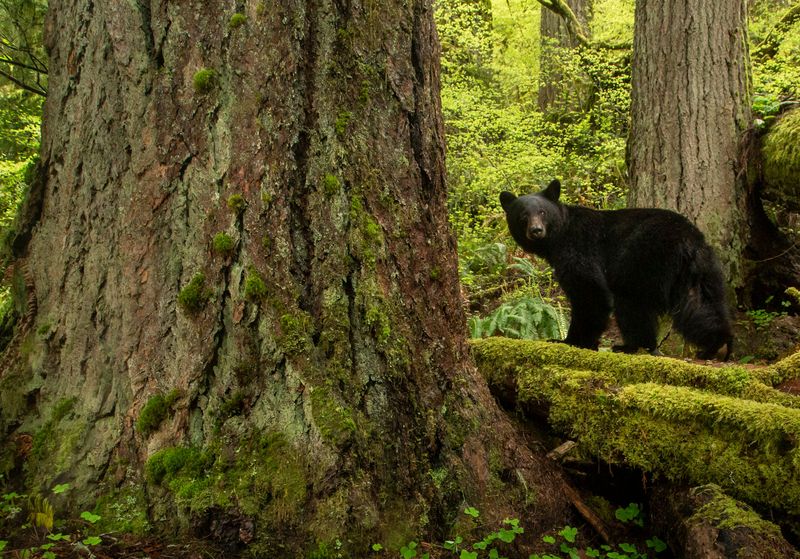
Lumbering through the woods, the black bear’s coat serves as both armor and disguise. Its dark fur allows it to blend seamlessly into the forest shadows, making it an elusive presence.
This coat is also an important thermal insulator. During the colder months, the thick black fur traps heat, enabling the bear to maintain its body temperature.
Black bears are also known for their intelligence. They use their keen sense of smell and memory to track food sources, demonstrating remarkable survival skills.
Black Mamba
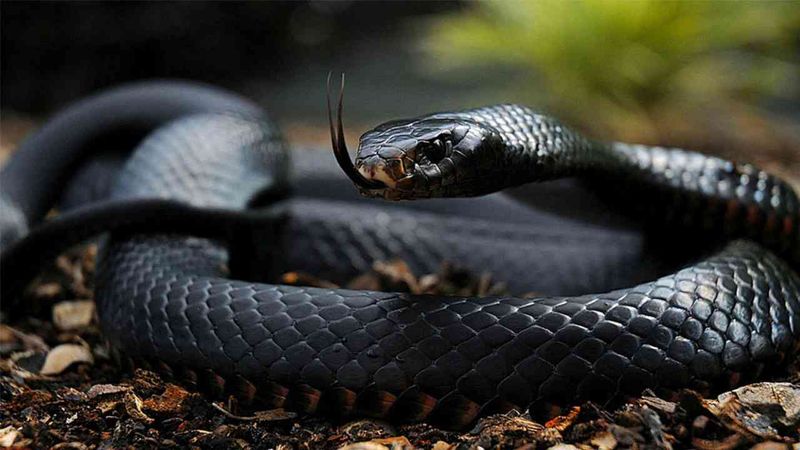
Known for its speed and agility, the black mamba is a creature of legends. Contrary to its name, its skin is not black, but its interior mouth is—a warning to predators and prey alike.
This serpent’s coloration helps it remain hidden in the African savannah. Its ability to blend into the earthy tones of its environment makes it a formidable predator.
Regarded as one of the deadliest snakes, its venom acts quickly. Interestingly, the black interior of its mouth is a more potent deterrent than its venom for many animals.
Black Swan
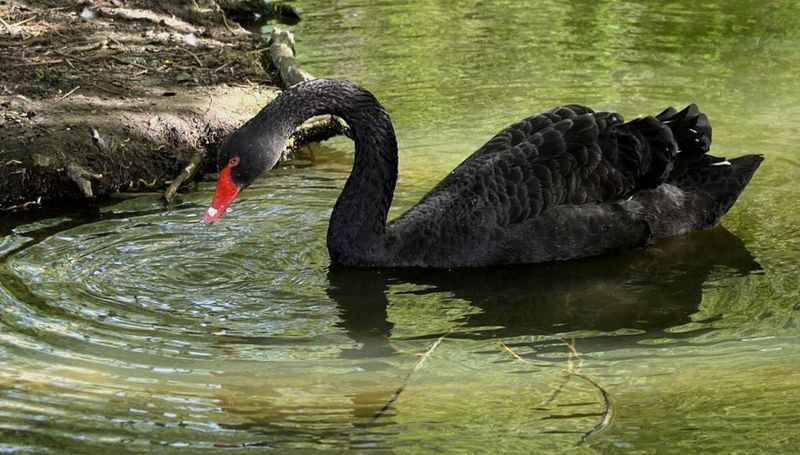
In the tranquil waters, the black swan is a vision of elegance and grace. Its black plumage, accentuated by a striking red bill, is both beautiful and functional.
The dark feathers provide camouflage against predators from above, blending with the water’s surface during dawn and dusk. This makes it harder for aerial threats to spot them.
Black swans are also symbols of rarity and unpredictability, known for their unique mating dances. Their black coats are a defining characteristic that sets them apart in the avian world.
Black Lemur
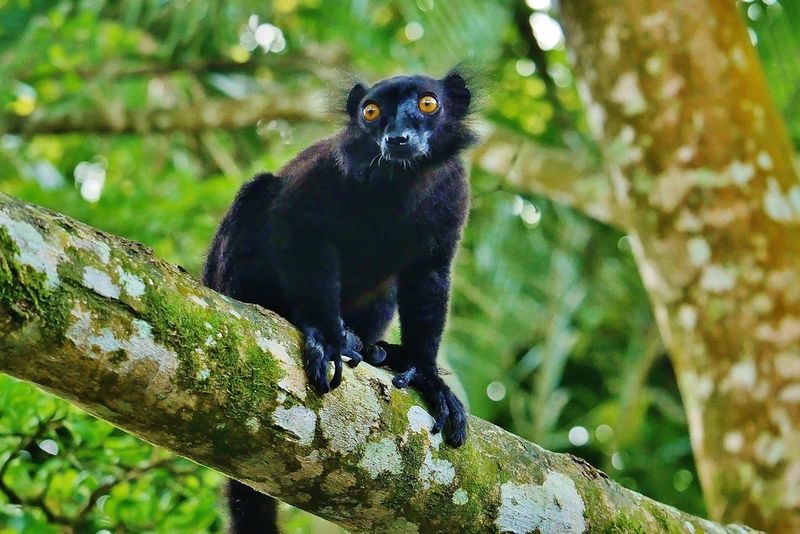
Amidst the lush greenery of Madagascar, the black lemur exhibits its playful personality. Its dark coat allows it to meld into the shadows of the forest canopy.
This camouflage is crucial, protecting it from predators as it moves through the treetops. The lemur’s agility and keen social dynamics enhance its survival, making it a fascinating subject of study.
Black lemurs are known for their social structures, often seen grooming and playing with each other, which strengthens their bonds and group cohesion.
Black Wolf
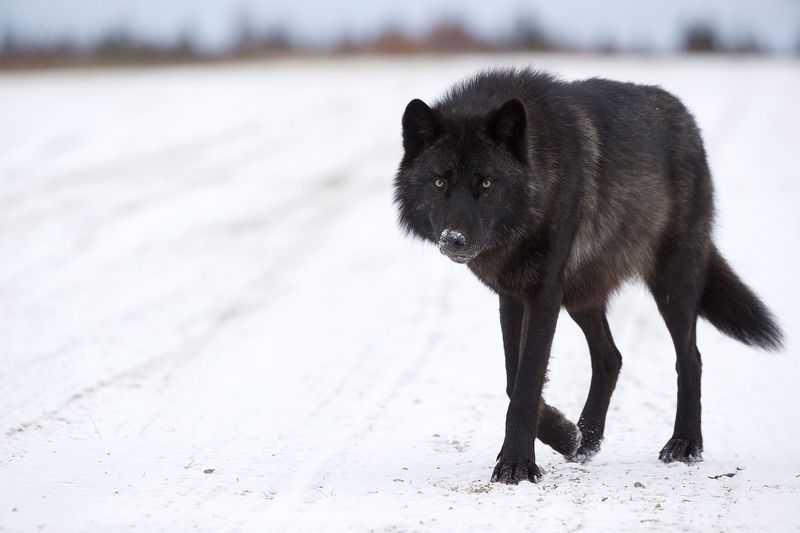
In the stark white of winter, the black wolf stands out, yet its coat provides unexpected advantages. The black fur absorbs more heat, a vital trait in cold environments.
Despite its bold appearance, the black wolf uses its intelligence and pack dynamics to hunt efficiently. The coat also offers camouflage during dusk hunts.
Did you know? Black wolves are often viewed as symbols of mystery and transformation in folklore, embodying the wild spirit of nature. Their striking appearance continues to capture human imagination.
Black Rhinoceros
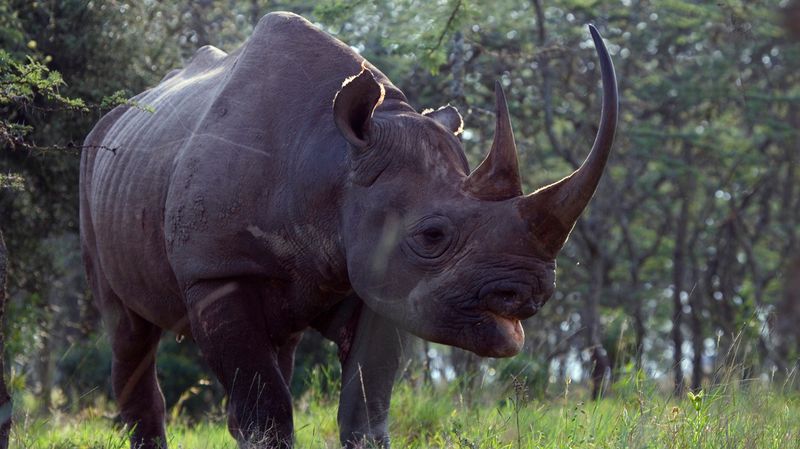
The black rhinoceros, with its rugged exterior, roams the African savannah with confidence. Its dark skin provides a unique form of camouflage against the rocky landscapes.
This armor-like skin protects it from predators and harsh climate conditions. Despite its size, the black rhino is surprisingly agile and can charge at impressive speeds.
The species’ name is somewhat misleading, as the color is more grayish-brown. However, its dark hue serves as a natural defense mechanism, blending with its arid surroundings.
Melanistic Penguin
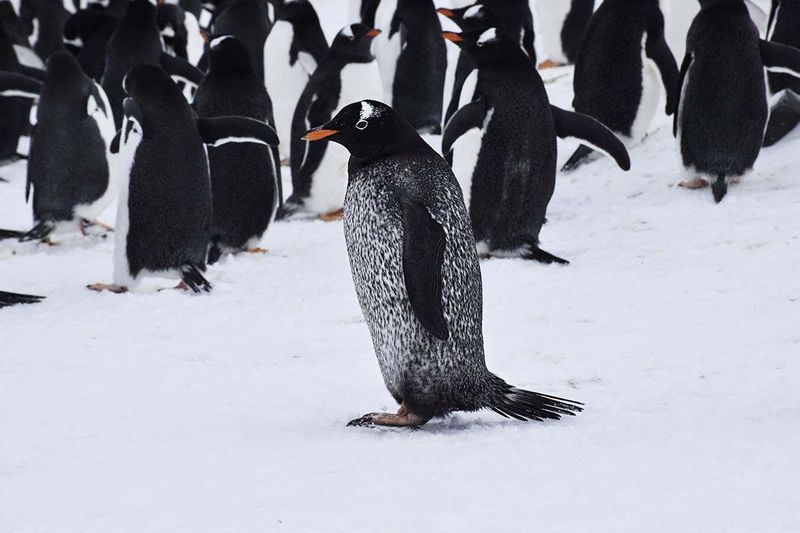
In the icy realms, the melanistic penguin is a rare sight. Its predominantly black feathers set it apart from its peers, adding an air of uniqueness to its appearance.
These black feathers can absorb more heat, a valuable adaptation in cold climates. The penguin’s social behavior remains unchanged, relying on group dynamics for survival.
Did you know? Melanistic penguins are so rare that they become instant celebrities among wildlife watchers, drawing enthusiasts to observe this marvel of nature.
Black Widow Spider
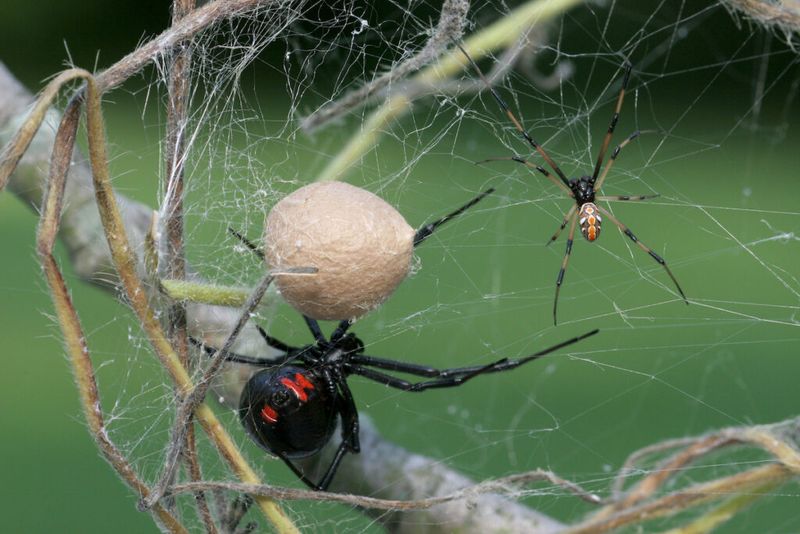
Amidst its silky web, the black widow spider is both feared and fascinating. Its shiny black body and the iconic red hourglass mark are unmistakable signatures.
This coloration serves as a universal warning, deterring potential predators from approaching. The spider’s venom is potent, making it a formidable creature despite its small size.
Black widow spiders are found worldwide, adapting to various environments. Their web-spinning skills and strategic hunting ensure their place in the natural hierarchy.
Black Vulture
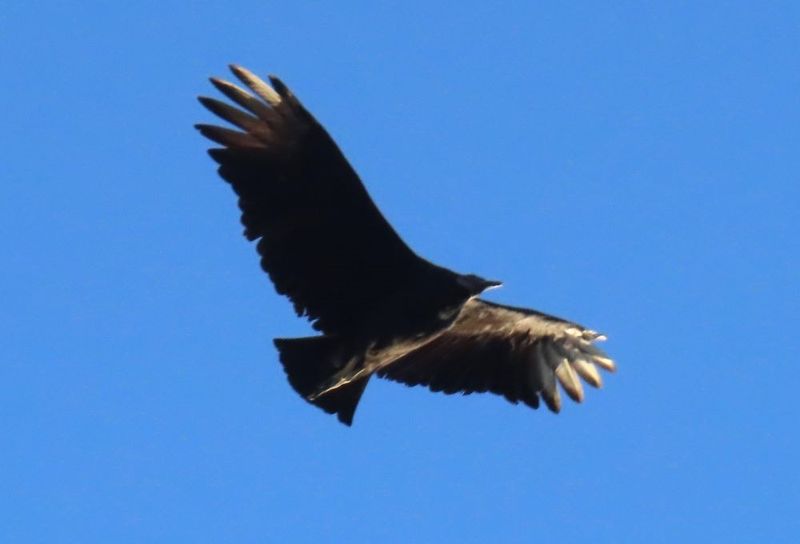
High above, the black vulture commands the skies with its impressive wingspan. Its dark feathers provide excellent camouflage during flight, blending against the backdrop of the sky.
This adaptation helps it avoid detection by potential threats and focus on scavenging. Black vultures are known for their keen eyesight and strong sense of smell.
Interestingly, they play a crucial role in their ecosystem by cleaning up carrion, preventing the spread of disease. Their presence is vital to maintaining ecological balance.
Black Tasmanian Devil
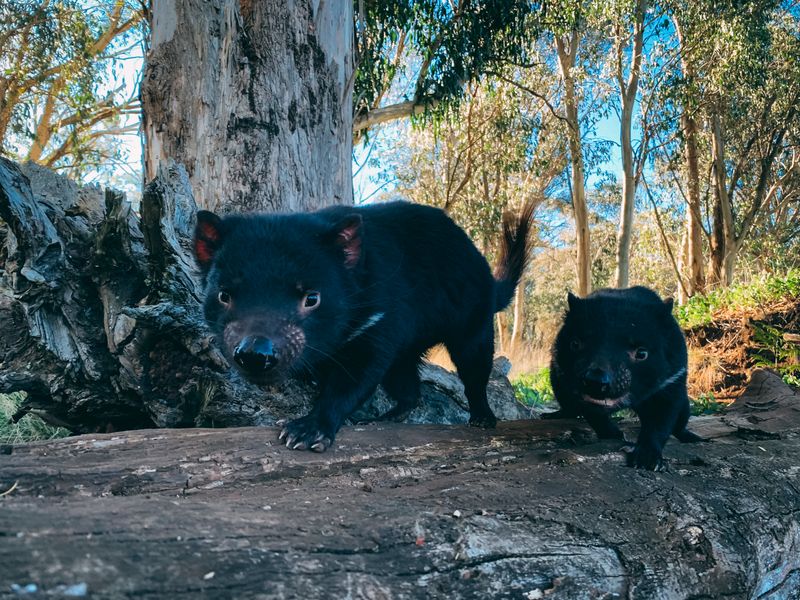
Known for its fierce growl and tenacious nature, the Black Tasmanian Devil is a nocturnal marsupial with distinctive black fur. This dark coat allows it to blend seamlessly into the night, aiding in both hunting and avoiding predators. Their black hue also helps in heat absorption during colder nights.
Interestingly, despite their fearsome reputation, these creatures are quite shy and prefer solitude. The black fur of the Tasmanian Devil plays a crucial role in thermoregulation, allowing them to thrive in Tasmania’s diverse climate.
Did you know? The Tasmanian Devil’s dark coat is so iconic that it inspired the cartoon character, Taz.

